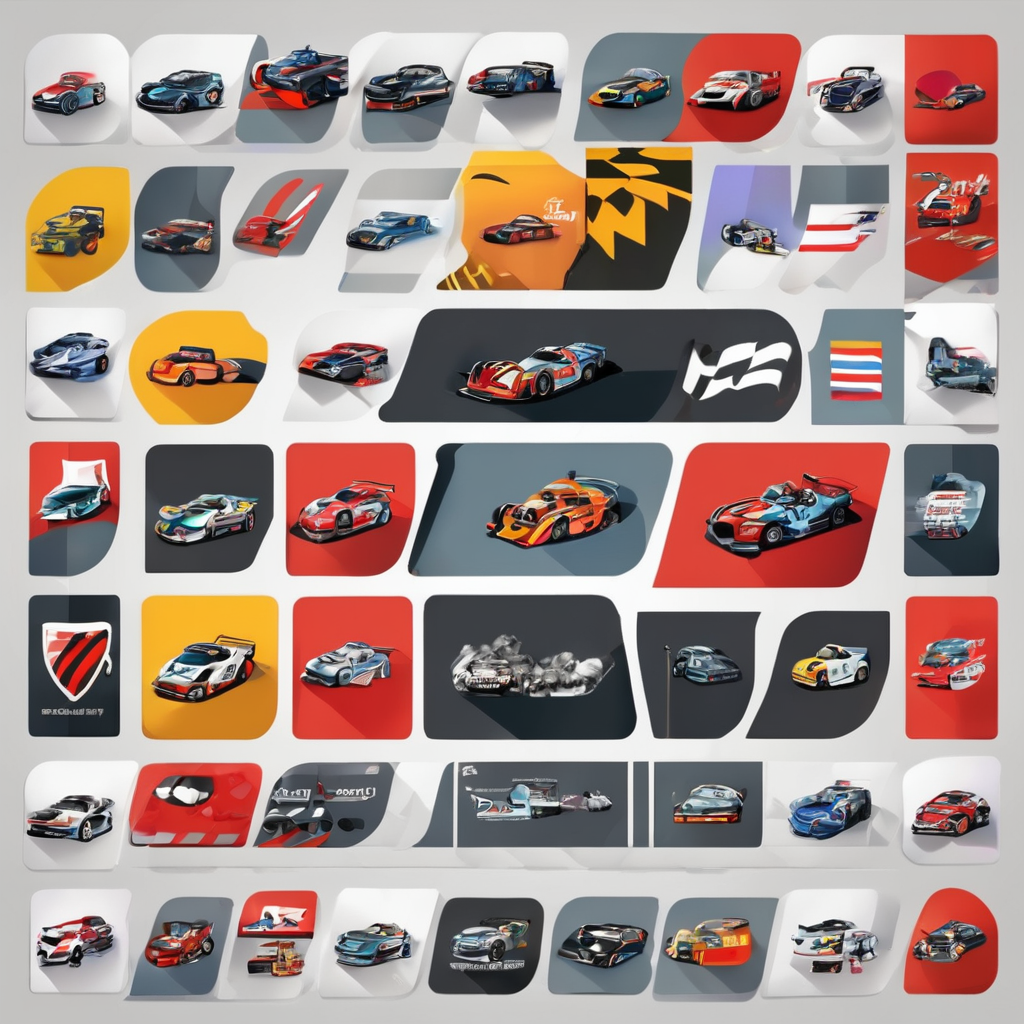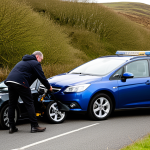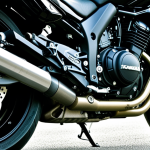Essential Methods for Verifying Authentic Replacement Parts
When verifying genuine British car parts for classic car restoration, it is crucial to follow precise steps to ensure authenticity. Start by thoroughly inspecting the part for critical identification features such as manufacturer logos, consistent fonts, and correct part numbers. Genuine parts often include subtle details—like specific casting marks or date stamps—that counterfeit versions fail to replicate accurately.
Manufacturer documentation is indispensable. Always cross-check the serial numbers on the part with official records. If the numbers differ or appear tampered with, it is a strong indication the part is counterfeit. Authenticity checks can also involve referencing original factory catalogs or service manuals where part specifications are detailed precisely.
Also to discover : Transform Your British Sedan: A Comprehensive Guide to Installing a Gorgeous Panoramic Sunroof for a Unique Look
Using a magnifying glass often helps identify fine engraving marks or holograms incorporated by the manufacturer to deter fraud. Another step is taking note of the material quality and finish; genuine parts tend to have more consistent coloring and smoother finishes compared to inferior counterfeit alternatives.
In summary, a combination of physical inspection, documentation verification, and recognizing small but telling features forms the core of verifying genuine British car parts reliably. This approach minimizes risks for classic car restorers aiming to maintain integrity and value.
Have you seen this : Comprehensive Guide to Hydraulic Brake Maintenance for UK Commercial Trucks: Effective Techniques for Optimal Performance and Longevity
Essential Methods for Verifying Authentic Replacement Parts
Ensuring the authenticity of replacement parts is crucial in classic car restoration to maintain value and performance. Start by closely examining manufacturer documentation and serial numbers, which serve as reliable indicators of genuine components. Cross-reference these details with official records to confirm the part’s origin.
Identifying original parts involves studying critical features such as unique markings, stamps, or embossing specific to British car manufacturers. Genuine parts often display consistent font styles, crisp logos, and uniform materials, whereas counterfeit pieces may show irregularities or cheap finishes.
A practical step-by-step approach includes:
- Verifying serial numbers against manufacturer databases.
- Comparing physical characteristics with known originals.
- Checking for correct packaging details and authenticity labels.
Remaining vigilant in authenticity checks protects restorers from costly errors. Using manufacturer guides in combination with hands-on inspection enables buyers to confidently select parts that uphold a vehicle’s heritage, ensuring it performs and looks as it did when first crafted.
Recognising Frequently Counterfeited Brands and Parts
Certain British classic car part brands are more frequently targeted by counterfeiters due to high demand in the restoration market. Popular marques like MG, Triumph, and Jaguar consistently face issues with commonly faked car parts, including components like carburetors, brake cylinders, and badge emblems. Awareness of these at-risk brands is vital for anyone involved in British car restoration.
Visually, counterfeit parts often display telltale signs such as uneven casting, inconsistent fonts, or misplaced logos. These defects contrast with the precise craftsmanship and quality control typical of authentic British classic car part brands. Physically, counterfeit parts may be lighter or utilize inferior materials that affect durability and performance.
Unique authentication marks—such as embossed serial numbers, specific stamps, or proprietary packaging labels—can further help confirm genuine parts. For example, some manufacturers incorporate distinct holograms or color-coded tags that are difficult to replicate. Recognising these subtle, yet critical authenticity checks is key to avoiding counterfeit risks and ensuring that classic vehicles maintain their integrity throughout restoration.
Essential Methods for Verifying Authentic Replacement Parts
Verifying genuine British car parts requires meticulous attention to critical identification features. Begin by examining manufacturer logos, fonts, and part numbers carefully. Genuine parts typically have precise casting marks, clear embossing, and consistent finishes. In contrast, counterfeit parts often show irregularities like uneven lettering or poor-quality materials.
A step-by-step approach enhances authenticity checks:
- Confirm serial numbers directly with manufacturer databases to avoid tampering.
- Use magnification tools to spot fine engraving or holograms that counterfeiters find hard to replicate.
- Assess the material quality; authentic parts maintain consistent colors and textures that match factory standards.
Classic car restoration depends heavily on manufacturer documentation. Always cross-reference paperwork and service manuals to align part specifications precisely. If packaging is available, verify it includes authentic labels or seals.
By integrating physical inspection, thorough documentation review, and knowledge of unique manufacturer traits, restorers can confidently select authentic parts. This multistep process safeguards the vehicle’s heritage and ensures performance standards remain uncompromised throughout restoration.
Essential Methods for Verifying Authentic Replacement Parts
In classic car restoration, diligently verifying genuine British car parts requires mastering a clear step-by-step approach. Start by identifying original parts through their critical identification features—manufacturer logos must be sharply defined, fonts consistent, and part numbers correctly formatted without irregularities. Raised stamps, casting marks, and date codes serve as unique identifiers often missing or poorly copied on counterfeit components.
Next, exhaustively perform authenticity checks using manufacturer documentation. Cross-reference serial numbers with official databases to confirm legitimacy. Any discrepancy here strongly signals a fake part. Pay attention to matching paperwork or certificates of authenticity, as these often accompany genuine parts and provide critical verification.
Using tools like magnifying lenses can reveal subtle holograms or micro-engraved security marks incorporated by British manufacturers. Assessing material quality is another technique—originals feature uniform finishes, consistent coloring, and premium textures, distinguishing them from common counterfeit materials that feel cheaper or show uneven surfaces.
To summarize, thorough authenticity checks blend physical inspection—focusing on unique visual cues and materials—with careful use of official manufacturer documentation and serial number verification. This process shields restorers from counterfeit parts and preserves the car’s heritage.
Essential Methods for Verifying Authentic Replacement Parts
When verifying genuine British car parts, thorough authenticity checks are essential to protect your classic car restoration project. Begin with a step-by-step approach: first, carefully examine physical features like manufacturer logos, unique casting marks, and precise fonts that differentiate originals from counterfeits. Genuine parts usually display consistent finishes and clear embossing, while fakes often show irregularities such as uneven lettering or poor materials.
Next, employ manufacturer documentation and serial numbers. Confirm these numbers against official databases to detect tampering or mismatches, a critical element of effective authenticity checks. Serial numbers not matching official records often indicate counterfeit parts, jeopardising restoration quality.
Detailed comparison of parts against factory specifications from service manuals helps ensure accuracy. Use magnification tools to identify small engravings or holograms included by manufacturers to deter fraud. Assess material quality carefully—authentic parts feature consistent colour and texture aligned with original production standards.
Integrating physical inspection with documentation verification bolsters confidence in selecting proper British car parts. This multifaceted verification strategy is indispensable for achieving authentic restoration results that maintain vehicle heritage and integrity.
Essential Methods for Verifying Authentic Replacement Parts
When verifying genuine British car parts, a detailed, step-by-step approach is vital for successful classic car restoration. Start by examining critical identification features differentiating originals from counterfeits. Genuine parts display consistent fonts, sharp manufacturer logos, and accurately formatted part numbers. Inspect raised stamps, casting marks, and date codes closely; these subtle marks are rarely duplicated precisely by counterfeiters.
Authenticity checks rely heavily on manufacturer documentation. Cross-reference each part’s serial number with official databases to confirm legitimacy. Serial numbers that don’t align or appear altered typically indicate fake components. Additionally, review any certificates or paperwork accompanying the parts, verifying they correspond exactly with the part and vehicle specifications.
Use magnification tools to detect micro-engravings or holograms integrated by manufacturers as security features. These often invisible details serve as reliable identifiers during authenticity checks.material quality assessment is equally important: genuine parts have uniform finish, consistent coloring, and superior textures that counterfeit parts lack.
Employing these combined techniques—thorough physical inspections, serial number verification, and careful evaluation of manufacturer records—ensures restorers select authentic components, preserving both vehicle integrity and performance.
Essential Methods for Verifying Authentic Replacement Parts
When verifying genuine British car parts, a structured approach centred on authenticity checks is vital to safeguard classic car restoration projects. Begin by focusing on critical identification features distinguishing originals from counterfeits. Genuine parts exhibit sharp manufacturer logos, consistent and precise fonts, and correctly formatted part numbers. Raised casting marks or date codes serve as unique identifiers that counterfeiters often overlook or reproduce poorly.
Incorporate manufacturer documentation into the verification process. Accurately cross-referencing serial numbers against official databases confirms part legitimacy with precision. Any serial number discrepancy is a definite red flag indicating a potential fake, which can seriously compromise restoration quality and vehicle value.
Employ tools like magnifying lenses to uncover microscopic engravings, holograms, or security elements embedded by manufacturers—features counterfeit parts rarely replicate convincingly. Additionally, evaluating material quality is crucial; authentic parts have uniform finishes and consistent colouring aligned with factory standards, unlike counterfeit materials which often feel substandard or show uneven surfaces.
This combination of detailed physical examination with rigorous document and serial number checks forms a comprehensive framework for verifying genuine British car parts, ensuring restorers maintain authenticity and performance standards throughout their classic car restoration.
Essential Methods for Verifying Authentic Replacement Parts
Diligent authenticity checks begin by methodically verifying genuine British car parts through a structured, step-by-step process. First, focus on critical identification features: examine manufacturer logos for sharpness, check for correct and consistent fonts, and confirm part numbers follow official formats without alteration. Raised stamps, date codes, and casting marks provide unique identifiers that counterfeit parts rarely replicate accurately.
Next, use manufacturer documentation extensively. Cross-reference serial numbers with official databases to verify legitimacy; discrepancies or tampering signals counterfeit parts. Authentic parts often come with paperwork or certificates, so always match these records exactly to the parts and vehicle specifications involved in classic car restoration.
Employ magnifying tools to detect micro-engraved security marks, holograms, or fine details embedded by manufacturers to prevent forgery. Material inspection is essential—original parts feature uniform finishes, consistent colouring, and textures adhering to factory standards, distinguishing them from lower-quality counterfeit materials.
In summary, by combining thorough physical inspection, precise serial number verification, and detailed manufacturer documentation review, restorers can confidently identify authentic parts. This meticulous approach safeguards vehicle integrity and ensures restoration success when verifying genuine British car parts.
Essential Methods for Verifying Authentic Replacement Parts
When verifying genuine British car parts, a precise, step-by-step protocol is essential to ensure parts meet the standards required for classic car restoration. Begin by examining critical identification features differentiating original parts from counterfeits. Genuine components display sharply defined manufacturer logos, consistent fonts, and accurately formatted part numbers. Raised casting marks and date codes, often overlooked by counterfeiters, serve as reliable verification points.
Next, authenticity checks should include careful use of manufacturer documentation. Cross-reference serial numbers with official databases; discrepancies or altered numbers usually indicate counterfeit parts. Always verify that accompanying records, such as certificates or service paperwork, align exactly with both the part’s details and the vehicle’s specifications.
Use magnification tools to uncover micro-engravings or holograms integrated by manufacturers, which counterfeiters rarely replicate convincingly. Additionally, assess the material quality: authentic parts have uniform finish, consistent coloring, and superior texture, whereas fakes often show inferior materials or uneven surfaces.
Employing this combined approach—thorough physical inspection, diligent serial number verification, and meticulous review of official documentation—builds robust confidence in selecting genuine replacement parts essential for maintaining the integrity and performance of classic British vehicles.
Essential Methods for Verifying Authentic Replacement Parts
Accurately verifying genuine British car parts requires a systematic, step-by-step approach focusing on distinct authenticity checks. Begin with close inspection of critical identification features: original parts exhibit sharply detailed manufacturer logos and consistent, properly formatted part numbers. Raised stamps, date codes, or casting marks provide unique, difficult-to-copy indicators often absent or poorly reproduced on counterfeits.
Using manufacturer documentation is indispensable. Cross-reference serial numbers with official databases to verify each part’s legitimacy; mismatched or altered numbers strongly suggest counterfeit components. Service manuals and factory catalogs serve as valuable references for confirming specifications and design details.
Further, employ magnifying tools to detect micro-engravings and holograms embedded by manufacturers as security features. Evaluating material quality offers additional insight—authentic parts maintain consistent textures, colour, and finishes matching factory standards, whereas counterfeit parts often show inferior materials or uneven surfaces.
Together, these combined techniques of physical inspection, document verification, and serial number cross-checking form a comprehensive framework of authenticity checks. This rigorous process is vital for anyone involved in classic car restoration, ensuring components are genuine and preserve the vehicle’s original performance and heritage.




